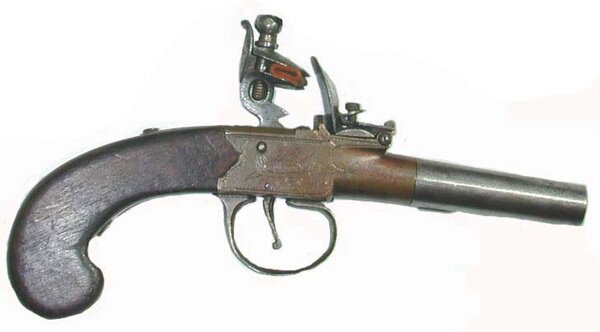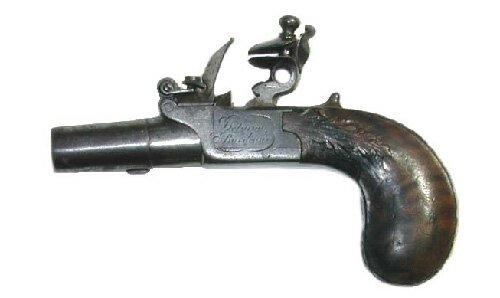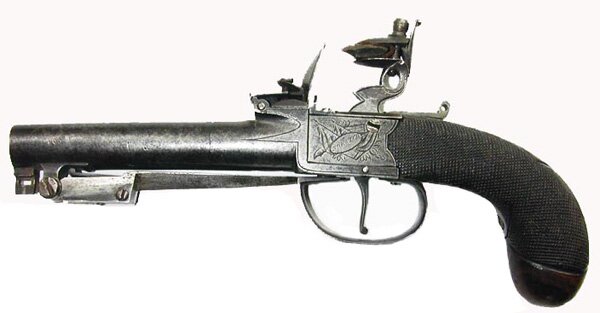Their name says it all. They were the "Saturday Night Special" of the 16th-18th century. Before the Derringer, they were "Gentleman's" or "Muff Pistols". Typically a smaller pistol that was easily concealed. They were favored among the gentry and women because of these traits. Men would carry them concealed in a waistcoat pocket and Women would hide them in a hand muff.
The overcoat pistol was slight larger version of the pocket pistol. In every case the pocket pistol was designed to be concealed. Many pocket pistols were also turn-out guns, allowing an even slimmer design because there was not ramrod.. However, muzzle loading examples also exist.
One of the more interesting aspects common among these pistols is that the doghead was centered internally on the pistol in a fashion similar to hammers on today's pistols. (That is the action was mounted internally instead of one of the sides of the pistol.) This type of design is known as a "box lock". The box lock was more difficult to manufacture than a typical side mounted flintlock and tended to be more expensive to produce. It was common among many small pistols but not as common among larger pistols or muskets, but some examples of box lock muskets do exist.
Muff Pistol

Muff Pistol made in London Note the turn-out barrel and box-lock.

Where's the Trigger?
This muff pistol has a folding trigger which allows safer concealment.
Dagger and Muff Gun?

Another oddity. This Muff gun has been fitted with a triangular folding bayonet.

18th Century English Overcoat Pistol

The only author and editor of all pages on the site. Most of what I write about is based on years of book reading on the topic. My first web page was published back in 1994.